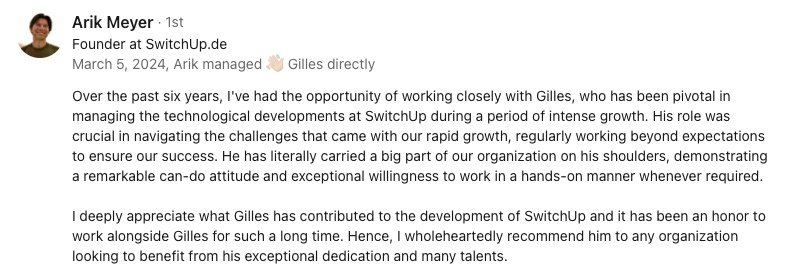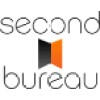Abstract:
The article advocates for minimalist storytelling in the tech industry as a practical solution to the widespread challenge of standing out without overwhelming audiences or relying on jargon. It explains that both oversharing and undersharing can weaken professional narratives—too much detail dilutes the core message, while too little renders profiles forgettable. To strike the right balance, the piece offers actionable frameworks such as identifying a “narrative anchor” (a defining career moment or principle), distilling a “three-word legacy” to encapsulate professional values, and selecting concise story snippets that are both relevant and authentic. Real-world examples, like Paul Jarvis’s “Grow better, not bigger” and Stephanie Hurlburt’s commitment to ethical, accessible graphics tech, illustrate how memorable narratives are built through clarity and focus rather than lengthy lists or forced vulnerability. The article provides practical prompts—from mapping key career moments to crafting a one-sentence brand statement—and emphasizes the importance of ethical omission, setting boundaries, and avoiding clichés. Ultimately, it positions minimalist storytelling as a means to build trust, foster genuine connection, and create a consistent, memorable professional identity across platforms, offering a toolkit for tech professionals who want their stories to reflect who they truly are without unnecessary noise.
Minimalist storytelling in tech isn’t just a trend—it’s a lifeline for independent professionals like me who want to attract meaningful work without drowning in jargon or disappearing behind a wall of buzzwords. As someone who transitioned from corporate roles to independent work, I’ve found that minimalist storytelling is essential for building a personal brand that draws in the right projects and clients. This article shares practical, relatable ideas for crafting a tech narrative that’s memorable, trustworthy, and clear—especially for those of us navigating the world of independent tech careers.
If you’ve ever scrolled through profiles that read like laundry lists or worried about sharing too much personal info, you’ll find ways here to strike the right balance. I’ll share what’s worked (and what hasn’t) from my own journey—moving from Berlin to Lisbon, leading multicultural teams in Beijing, and building science-focused startups—so you can build a story that feels true to you.
Here’s what you’ll get: a look at why tech stories often fall flat, ideas to sidestep those traps, and frameworks like narrative anchors, three-word legacies, and story snippets that clarify your message. You’ll see how tech professionals (myself included) make a bigger impact with fewer words, plus prompts to help distill your own story.
You’ll find a conversational guide, a bit of humor, and advice grounded in daily challenges—like balancing privacy, reputation, and the mental load of independent work. By the end, you’ll have a toolkit for minimalist storytelling that builds trust, connection, and a professional identity people actually remember.
The minimalist narrative dilemma
Why tech stories miss
Tech professionals often struggle to hit the right mix of detail in their stories. Some profiles end up as long lists of buzzwords and job titles—tough to tell apart from any other. Others swing into personal oversharing about projects, hobbies, and weekend coding. Both approaches backfire. Too much detail becomes a wall of text nobody wants to read. Too little detail is just bland and forgettable.
I learned this the hard way. When I led a multicultural team in Beijing, I thought listing every achievement would prove my worth. But my colleagues remembered the one story I told about debugging a product launch at midnight with a team spread across three time zones. That single, vivid moment built more trust than any list of skills.
Oversharing often comes from wanting to look honest and open. People think more detail seems genuine, but all the small bits can actually hide the main point. Most readers won’t keep track of every side project or minor win. Focusing on the details makes it easy to forget what really matters.
Undersharing is just as much of a problem. Just listing roles, skills, and some jargon blends your profile into the crowd. Scanning through yet another “results-driven tech leader passionate about innovation” leaves no impression. Real, small stories—a pivotal project or unique challenge—give people something to remember you by.
The trick: authenticity isn’t about putting every last detail on display. It’s about choosing the right moments that show your values and build trust, without losing your privacy or slipping into cliché. Being picky with your story isn’t dishonest—it’s how you make your message feel real and intentional.
Why we overshare or undershare
Social media loves to prompt us: “Share what you’re working on!” or “Tell your story.” In tech, where everyone aims to be noticed, it nudges professionals to over-share for attention. But there’s a tug in the opposite direction too.
After moving from Berlin to Lisbon, I realized how much my professional story needed to adapt to new audiences without oversharing personal details. In some cultures, sharing your weekend hackathon is normal; in others, it feels like bragging or even a privacy risk. I’ve had to prune my story like a gardener trims a wild hedge—cutting back what doesn’t serve, letting the strongest branches show.
Many worry about reputation or privacy, or are even concerned about security issues. Especially in tech, there’s a sense that personal stories could be judged or used the wrong way. Sometimes it’s not just about privacy—it’s about not feeling important enough to share a story at all.
Imposter syndrome sneaks in and makes people think their stories aren’t unique or worthwhile. I remember the first time I pitched my science popularization startup. Surrounded by founders with flashier backgrounds, I almost left out my years in fundamental physics—thinking it was too niche. But when I finally shared how my physics training taught me to value evidence over opinion, it resonated with investors and collaborators alike.
So, what’s a healthy way forward? For me, it’s about strategic vulnerability: sharing enough to be relatable, but not so much you cross professional boundaries. A few, well-chosen stories can build trust and connection, without giving up your privacy.
Mental models for minimalist storytelling
Anchor and echo
Instead of telling your whole job history, focus on a single defining piece—your narrative anchor. For me, my training in fundamental physics is that anchor. It taught me to value evidence over opinion, a principle that shapes my approach to tech storytelling and product decisions. This anchor is the nugget that captures what you stand for.
Letting your anchor echo means weaving your core idea quietly throughout everything—your profiles, site, and case studies. It’s not about repeating the same words everywhere, but about using small, consistent signals:
- A phrase in your LinkedIn summary that matches your value
- A tagline on your website that hints at your story
- Repeated themes in your case studies or blurbs
This approach creates consistency and makes your narrative easier to recall. If you change direction later, you just pick a new anchor, and let the rest of your story reflect that. It’s simpler and less stressful than rewriting everything whenever your work moves in a new direction.
Three-word legacy
Some brands and professionals are known for a three-word legacy—a short phrase that sums up their style. Think “Just Do It” or “Grow better, not bigger.” These simple phrases help people remember what you’re about right away.
Choosing a three-word legacy forces you to be clear about your values or themes. Use your three words to filter what you share. For example, if you want people to remember “clarity, growth, independence,” then each snippet of your story should highlight at least one of those. Whenever you’re tempted to add more, stop and ask: does this bit reinforce my three words or distract?
Try this checklist:
- Does each sentence add something new?
- Did I cut out clichés and buzzwords?
- Is my language clear?
- Does the story link back to my key themes?
You don’t have to be a big brand to use this. Any tech professional—updating LinkedIn or their bio—can stand out by sticking to a three-word legacy. When your message stays consistent, it leaves a stronger impression.
Choosing story snippets that build trust
Picking story fragments that matter
Start with relevance. Pick moments that show your key message and actually matter to the people you want to reach. If a story doesn’t connect to your main idea or audience, it won’t stick. But it isn’t just about being relevant—it’s about being real.
Real details, not just claims, build trust. Instead of vague or broad statements, mention situations that really happened and can be supported. For instance, “I led a team through a tough product launch by using real user feedback” says more than “I always get results.” Tone matters, too: keep stories emotionally balanced.
A quick moment of struggle, or a value-based choice, is more powerful and memorable than drawing out drama. Stories that are brief and balanced feel relatable. Extra details just get in the way.
When I co-founded a cross-border e-commerce platform, I learned that sharing just one story about overcoming a language barrier resonated more than listing every project detail. Editing is your friend: cut each story to the essentials so every word builds your professional persona. A practical tip: read your story out loud—ask yourself, “Does each part add value, or is it just fluff?” Trimming keeps your story fresh and sharp.
Checklist for editing your story:
- Does each sentence add something new?
- Are clichés and buzzwords trimmed?
- Is the language clear and direct?
- Does every detail support your anchor or three-word legacy?
Examples that signal credibility
Start with a first principle—if you lead all your decisions with “data over opinion,” that says a lot. My background in fundamental physics makes me value evidence, which shows up in science entrepreneurship and building tech teams. This kind of detail stands out and says both what you know and how you work.
Or, sum up a real user problem you solved in a sentence—“Redesigned onboarding to cut user drop-off by actually listening to frustrations.” That shows skill and empathy without a big list. Including a value makes it even stronger.
Values-based snippets add meaning. For example, “I believe ethical tech should be accessible,” sets a tone right away. A basic way to phrase it: “I stand by [value], and it shapes how I [action].”
Authenticity without oversharing
Setting boundaries
Minimalist storytelling grows as much from what you skip as from what you tell. Leave out past roles that don’t fit, fuzzy job lists, or personal bits that don’t strengthen your message. You can use a checklist: does this belong or not? If not, skip it. This sort of filtering, as narrative experts note, makes stories sharper and easier to believe.
But cutting stuff out works best if you’re also upfront about why things aren’t included. If you don’t share details because of client privacy, just say so. Mentioning those limits actually helps build trust—people like honesty here.
Ethical omission doesn’t mean hiding; it shows respect for privacy or professional rules. Not sharing client data or trade secrets is a mark of integrity. Sometimes, saying that some bits are off-limits makes people even more interested or respectful.
When I worked with a fintech client, I made it clear that I couldn’t share specifics due to NDAs. Surprisingly, this honesty led to more trust, not less.
Avoiding forced vulnerability and cliché
Forced vulnerability—telling a hardship story just to seem relatable—doesn’t land well. People usually see through it, and nothing harms trust faster than something that feels fake. Clichés are just as bad; nobody needs more “against all odds” hero stories in tech.
Skip the generic underdog tales and stick to real, specific bits from your experience. Original, honest stories stay in minds longer than tired drama. Only share tough times if they show how you learned or stand for a value, not to get sympathy.
Always check if what you share helps others understand your style or principles. If it’s just drama, it isn’t adding anything. The story should support your audience, not the storyteller’s ego.
Real-world minimalist storytelling in tech
Concise public narratives
Take Paul Jarvis, who sticks with the line “Grow better, not bigger” everywhere. It’s simple, and it attracts people who want the same thing. A good phrase can define your whole professional style. Stephanie Hurlburt does something similar.
Her story—“Make graphics tech accessible and ethical”—says what she does and what she values, all in one go. Others keep things even shorter.
Wes Bos and Cassidy Williams are easy to remember. Their message is simple: they help people code. Their stories are friendly and free of jargon, which makes them inviting.
What links all these? They don’t use laundry lists or buzzwords. Each focuses on clarity, staying real, and using just a few strong fragments. Being minimalist isn’t about being vague—it’s about being focused.
Prompts for your minimalist story
Surface your defining moments
- List three defining moments in your work life and the values they highlight. These will help uncover your anchor narrative.
- Try a six-word story to find clarity and see what pops up.
Map your origin and value
- What problem did you spot, and how do you help fix it in your own way? This could be your anchor—a short, punchy statement that sets you apart.
Write your one-sentence brand statement
- Try: “I help [audience] achieve [result] by [approach].” Use this as a filter for every new line in your profile.
Check your bios for clutter
- Go through your profiles, cutting out:
- clichés or buzzwords
- extra or unrelated details
- anything that doesn’t match your anchor or three-word legacy
Doing this often keeps your story clear and easy to follow. With these frameworks, you can build content that really reflects you, minus the noise.
Turning frameworks into content
Shaping your public materials
Frameworks like anchor and echo and three-word legacy aren’t just talk—they shape how you present yourself, from websites to portfolios. Used well, every headline, about section, and project writeup mirrors your main story. Each touchpoint, whether it’s a landing page or a project, builds the same clear, reliable message. For example, when I rewrote my portfolio after moving to Lisbon, I focused on clarity and trust, echoing my anchor of “evidence over opinion” throughout. Experts have found that when stories stick to the essentials and are organized around a strong core, people are more likely to remember you and engage.
Building consistency and trust
Using these frameworks keeps your story consistent everywhere—LinkedIn, personal sites, or project descriptions. Every line echoes your anchor and legacy, making your identity easy to spot and more trustworthy. Consistency and clarity are tools the best portfolios and brand profiles use to be remembered.
Future articles will break down how to use these frameworks step by step—showing how to turn your story into headlines, about sections, and project writeups that actually get noticed.
What comes next
There’s plenty more to explore. A whole toolkit of minimalist storytelling tricks is out there so you can turn even the busiest content into something clear, memorable, and true to you.
Minimalist storytelling isn’t just about cutting words—it’s a way to build trust and show up without getting lost in jargon or endless details. By focusing on a strong anchor, repeating your main message, and boiling your story down to a few key themes, you build something people remember. Setting solid boundaries about what you share keeps your story sharp and signals you know yourself well. The tips and tools here are all about shaping a tech story that feels like you, not something forced. Clear communication isn’t about being polished; it’s about making a connection. Taking a bit of time to reflect or try one of these prompts can make your story stand out and truly capture what matters most to you.














